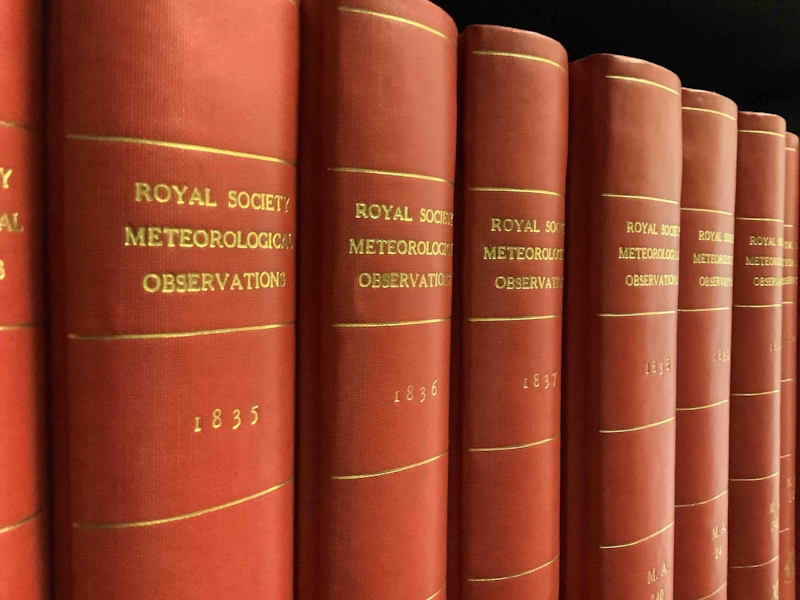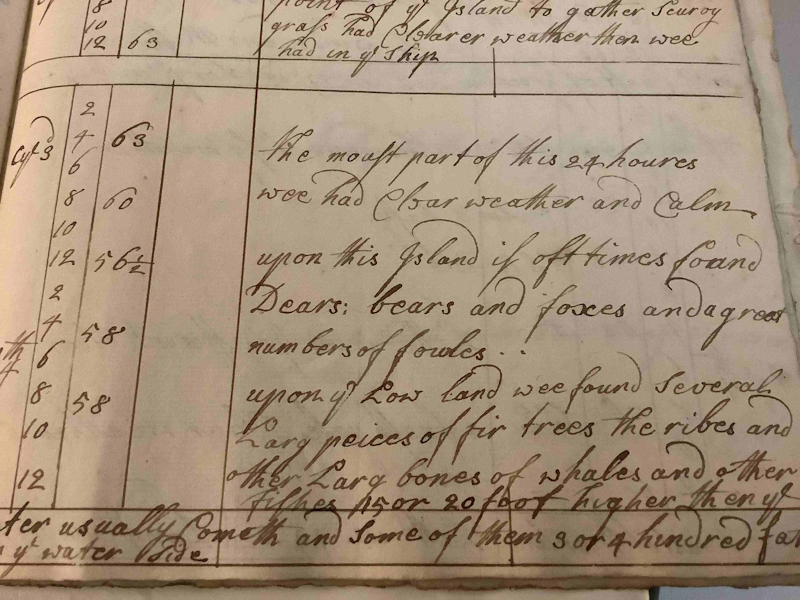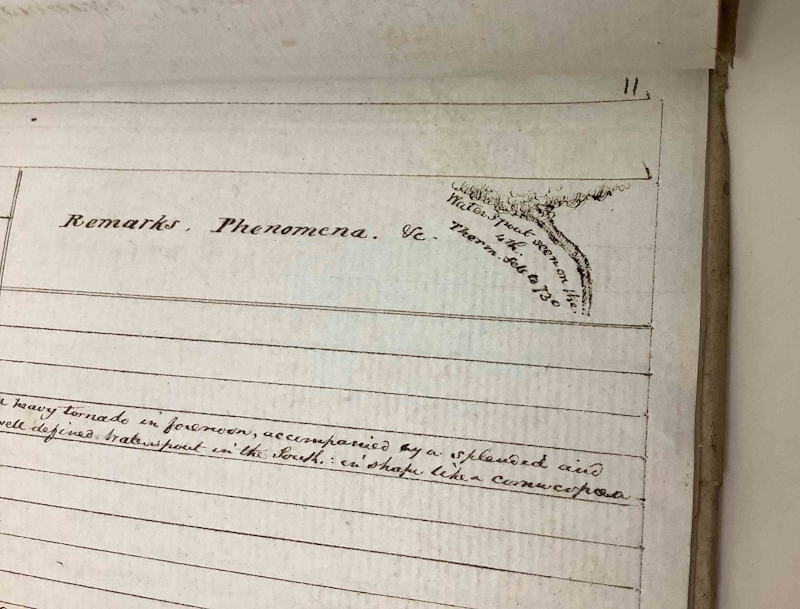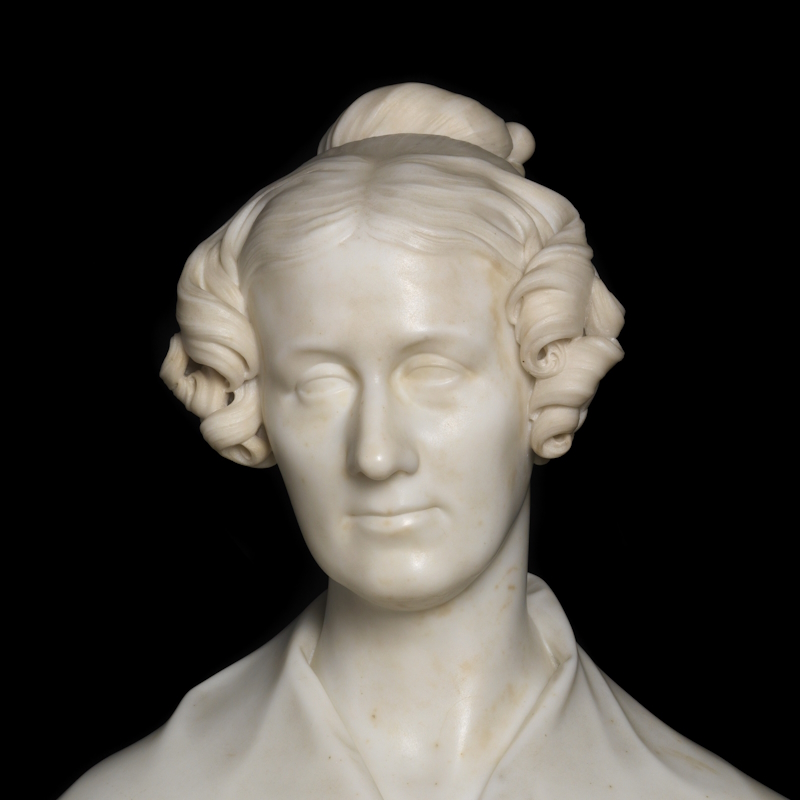Keith Moore's exploration of the Royal Society's Meteorological Archives leads him into some dangerous situations in Panama, India and an Australian penal colony.

Future plans for the digitisation of archives mean that we have to stay ahead of the game when it comes to cataloguing collections. The archives we record now will end up being made available in a year or two’s time, as full text items in Science in the Making or as Turning the Pages exhibits.
 The Royal Society’s meteorological archives
The Royal Society’s meteorological archives
Right now, I’m looking at the Society’s meteorological records (that’s the series ‘MA’ in archive terms), which have been accumulated since the eighteenth century, and form a huge dataset of world weather events. Useful stuff for writers and historians (what was the weather like on the day of Queen Victoria’s coronation?) but potentially for scientists too – using such historical data in modelling the Earth’s fragile envelope in an era of climate change might give us a better understanding of how humans have disrupted natural cycles.
Now, I’m not going to try to convince you that looking at rows and rows of barometer readings from the 1720s or 1840s raises or lowers my spirits to match. I imagine that approaching hundreds of pages of repetitive tables must have frozen previous archivists in their tracks, because the material has not been properly catalogued before. I was amused to see the glazed lethargy creeping into what rudimentary catalogue entries we do have: the ship William Canynges being misread as ‘William the Conqueror’ is a favourite, as is the conflating of Cape Palmas in Liberia with Las Palmas in Gran Canaria, or Fort Macquarie (Sydney) for Macquarie Harbour (Tasmania). Several of the ‘meteorological’ records are actually tidal observations. But if you do pay attention, there are always interesting things to be found in any archive, and this one is no exception. It means there are discoveries to be made, and stories to be told. Here are just a few.
To begin with, there are some really good, and probably unnoticed, covering letters within the meteorological archives: addressed to senior Fellows such as Sir John Herschel, James Jurin, Sir Humphry Davy and Sir Joseph Banks. But I’m far more interested in the lives of the lesser-known miners at the climate coalface (an unfortunate way of looking at it perhaps!) since most of these observations were made by figures on the periphery of science – ship’s captains, junior officers of the military, diplomats, clergymen, and many others. If you had an instrument or two, a weather eye, and some spare time, you might supply results to the Royal Society.
 A note on clear weather sightings of wildlife and whalebones, by John Cracroft, 1727 (MA/76)
A note on clear weather sightings of wildlife and whalebones, by John Cracroft, 1727 (MA/76)
One might expect the many naval officers to be drawn into the Royal Society’s projects – they kept logs and were instrument users, depending as they did upon the wind, Sun, and stars. Not surprising, therefore, that many such records came in via the Hydrographic Office, where naval Fellows of the Royal Society, such as Francis Beaufort (1774-1857) were employed. Of these, James Walter Fairholme (1821-1847) seems to have been the most unlucky. The ship William Canynges brought him home, fever-ridden, from the 1841 Niger Expedition, and he kept his weather observations as the vessel progressed (MA/81). By 1845, Fairholme had joined HMS Erebus, as part of Sir John Franklin’s North-West Passage expedition – fatally at the mercy of the weather.
 Marginal sketch of a waterspout, by George Bedford, 1836 (MA/78)
Marginal sketch of a waterspout, by George Bedford, 1836 (MA/78)
If nothing else, the Meteorological Archives show quite how dangerous it was at the sharp end of colonialisation. Accidents happened of course: Captain Henry Foster FRS (1796-1831) of HMS Chanticleer was drowned in Panama, leaving his journal to be completed by his second-in-command (MA/159). Tranquilly rolling tables of the weather might be made by military officers who, elsewhere, saw fighting of one kind or another, either against the colonised, or rival powers.
Even reverend gentlemen were not immune from the violence of the times. Gervase Bellamy (d.1756), who was chaplain to Fort William [Kolkata] in India, kept records of the weather in Bengal (MA/52), but would die hand-in-hand with his son, numbered with other British and Indian casualties of what would become known as the ‘Black Hole of Calcutta’. This was a British cell commandeered by forces of the Nawab, Siraj-ud-Daulah (1733-1757) after the surrender of the surgeon in charge of Fort William’s garrison, John Zephaniah Holwell FRS (1711-1798). Holwell’s unreliable account of the tragedy would fuel anti-Indian sentiment amongst the British for generations.
Heat exhaustion was the likely cause of Bellamy’s death. Elsewhere, the weather was similarly a matter of immediate necessity, rather than a simple academic exercise in scientific data gathering. For example, the 1822 meteorological accounts of Macquarie Harbour (MA/61) look identical to any other record of this type until you realise that they must have been recorded at Sarah Island, one of the worst of the Australian penal colonies. Here, the tides, gales and incessant lashing rain increased the difficulty of escape, but also ensured a high mortality rate amongst the luckless prisoners. If you’ve read Richard Flanagan’s extravagant fictionalised account of early Tasmania in the novel Gould’s Book of Fish (2001) you’ll get the idea. I won’t be complaining about our current cool summer for some time to come.






